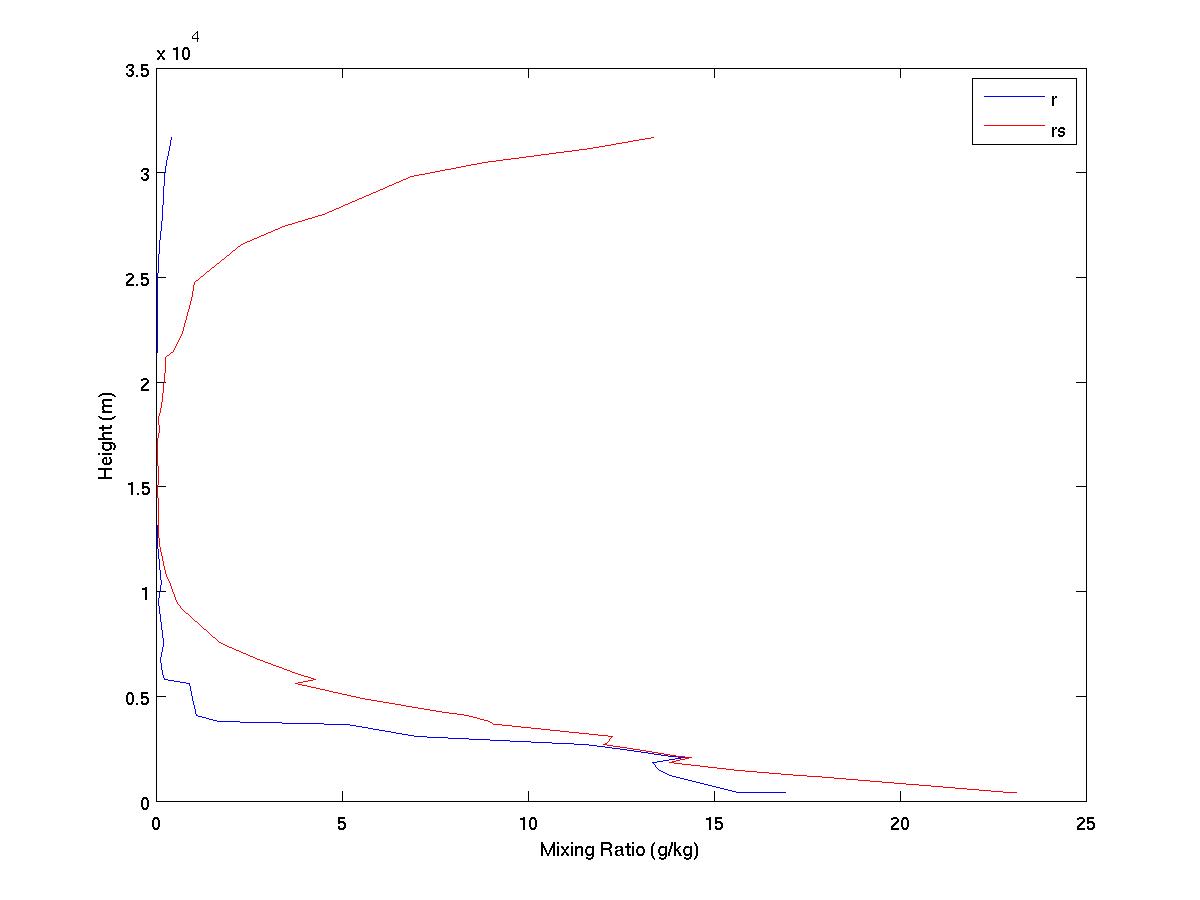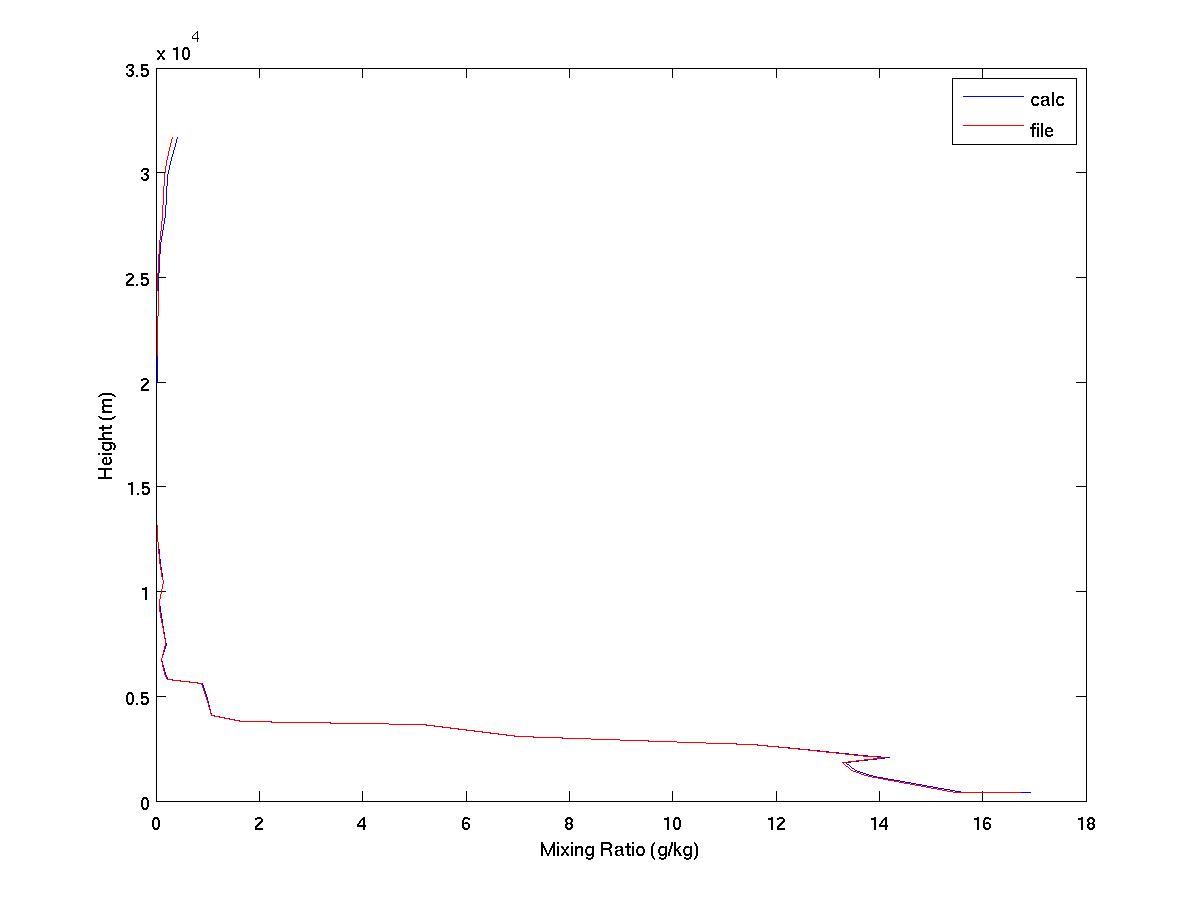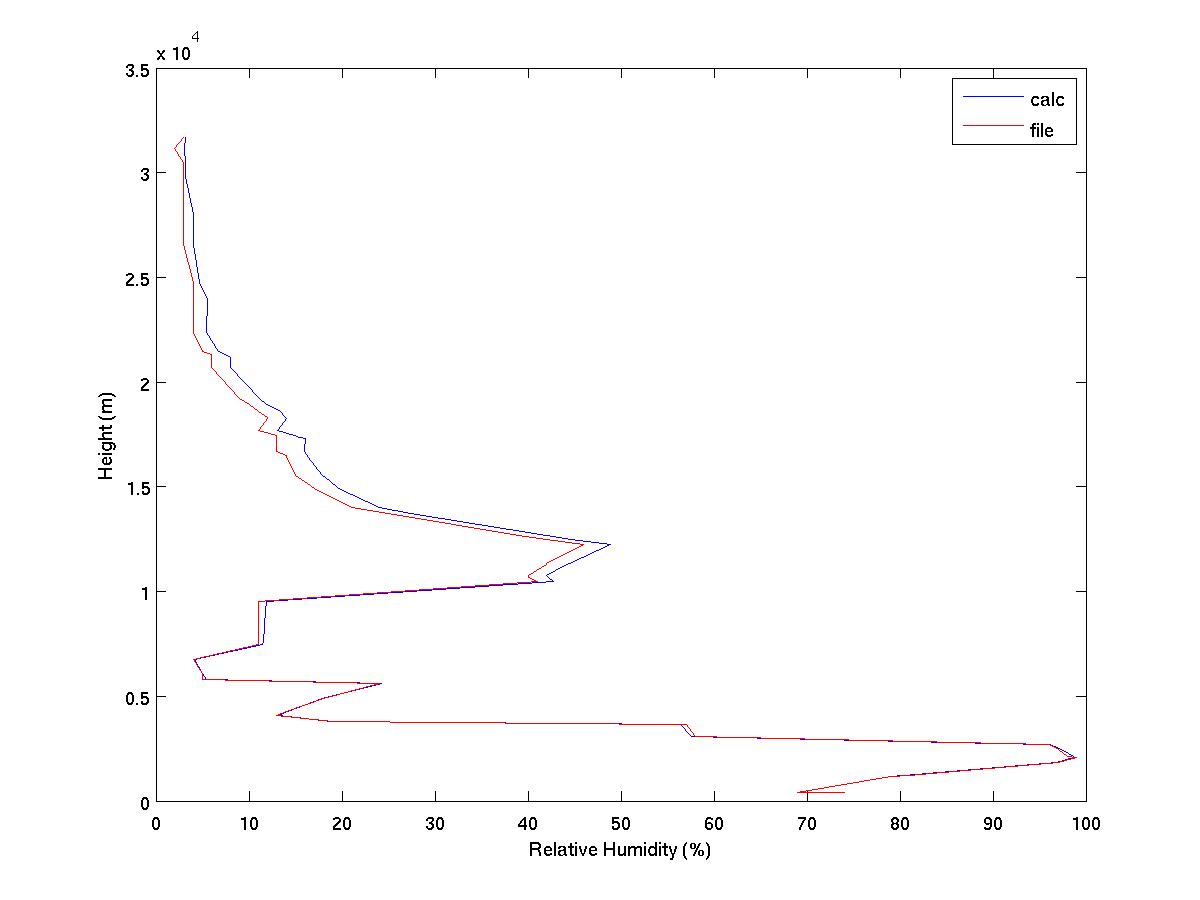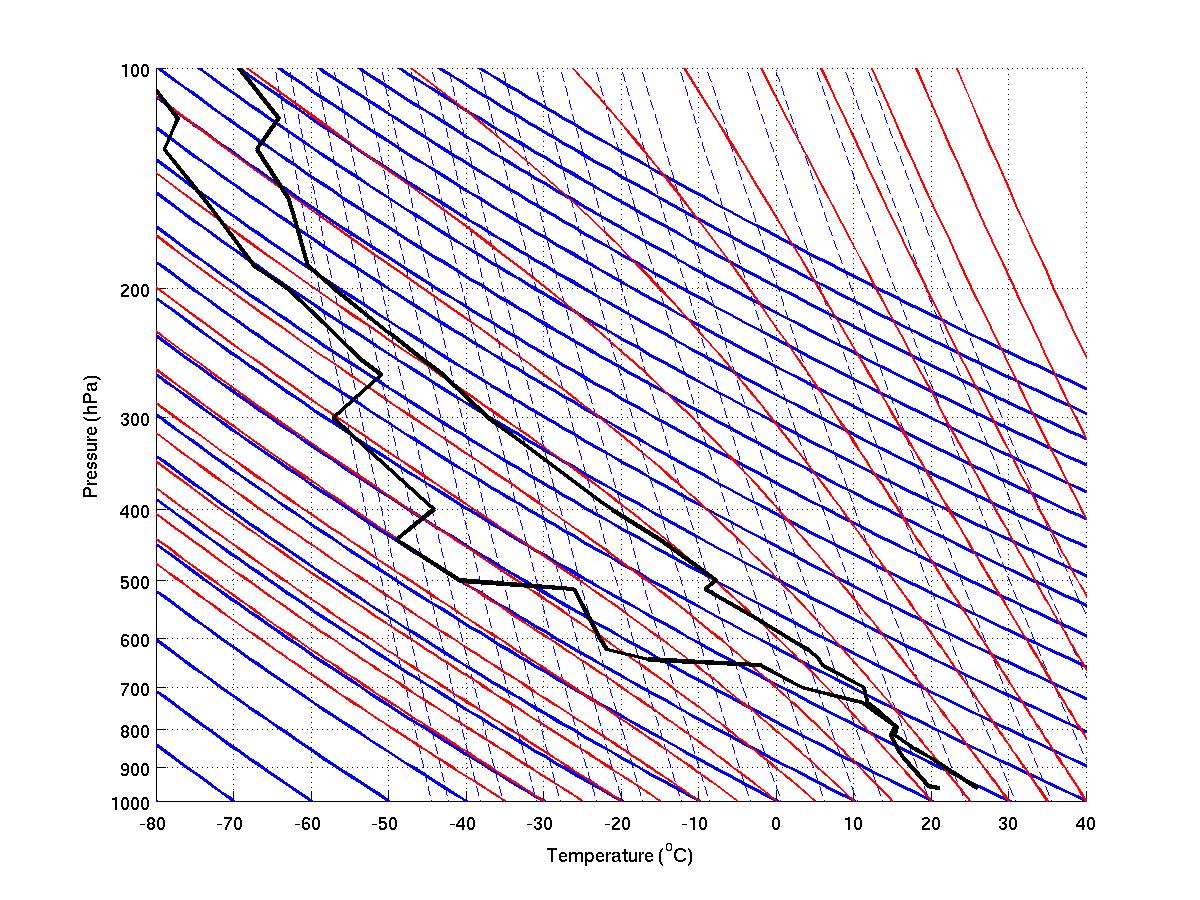SGF Sounding Data
- May 9, 2003 0000 UTC









1. From the Stuve diagram, it seems the atmosphere is unstable in the low
levels from the surface up to 700 hPa. It continues to be unstable up
into the mid-levels until 500 hPa. At about 500 hPa, the environmental
lapse rate begins to follow the process lapse rate so the atmosphere has
become neutral. It remains neutral until a height of about 250 hPa, where
the environmental lapse rate crosses to the right of the process lapse
rate, which translates into stability at the upper levels.
2. The tropopause is most likely located at approximately 1800 m, or 18
km. This can be seen in the first plot, the air temperature (T) and
dewpoint temperature (Td) versus height. Both temperatures begin to
increase with height, which does not occur until the tropopause is
reached. There is a large inversion just below that, at about 17 km,
where the temperature increases with height for a while, then decreases
again. Other smaller inversions occur at approximately 15 km, 6 km, and
2.5 km.
3. From the University of Wyoming plot, the winds are rotating clockwise
with height, which are said to be veering. Veering winds promote warm
air advection and rising motion. This atmosphere is able to support
strong updrafts and severe thunderstorms. There was a large tornado
outbreak on the evening of May 8, 2003, during a week where more than 150
tornadoes were reported. A certain METR2011 student happened to be
chasing near Lawrence, KS this day.
4. The lifting condensation level (LCL) is located at about 2500 meters,
as seen on the first graph where the air temperature (T) and the dewpoint
temperature (Td) intersect. This corresponds to a height of
approximately 815 hPa in pressure coordinates. The lowest clouds were
located at this level.
5. If the mid-levels were to suddenly cool substantially while the surface
temperatures remained constant, a parcel starting at the surface would
become more unstable. Since the initial temperature of the parcel is not
changing and it will be entering an environment much cooler than before,
then the parcel has the ability to move higher in the atmosphere.








